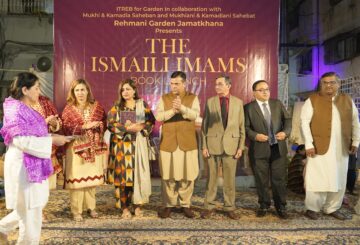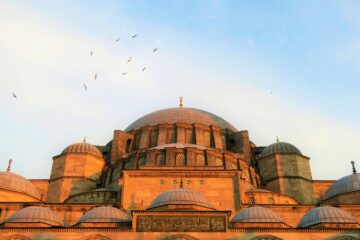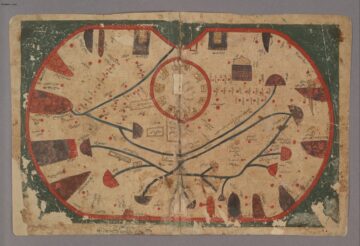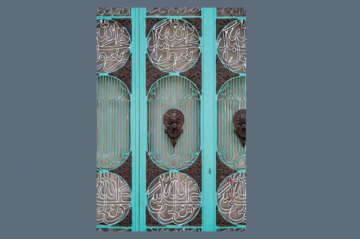The twentieth century was an historical turning point in the Muslim world. Rapid advances in the physical sciences, changes in modes of production, the revolutionising of communication, and the breakdown of old systems transformed the human condition, the way people relate to themselves, to one another, their heritage and the world at large. However, there is a crucial difference between the encounter and experience of modernity in the West and in the Muslim world. While modernity developed largely organically in the West from a traceable intellectual and historical evolution, its introduction in the Muslim world was abrupt. It was perceived as foreign and imposed and, therefore, met with suspicion. Nonetheless, it precipitated much cataclysmic change on all fronts.
In the Muslim world, modernity vied for intellectual space with strong, old and deeply-entrenched traditional values. The two were not always in essential and mutually exclusive antagonism. Rather, by making concessions, the forces of modernity and tradition came to settle into an uneasy, dynamic and dialectical equilibrium. Thus, while the trappings of modernity continue to pervade the Muslim world, they are creatively underscored, countervailed and counterbalanced by more organic and indigenous forces.
The editors of this new publication refute the popular misconception that the period between the thirteenth and twentieth centuries was one of intellectual stagnation and decay in the Muslim world. They focus on the twentieth century not because, as many hold, it was the first time the Muslim world broke out of intellectual inertia, but simply because the twentieth century was an era of unprecedented change. Being an era of change, it was naturally an era of vibrant and diverse intellectual responses to change and, therefore, worthy of academic attention.
In their Introduction to the volume, constructed on three major themes, the editors provide a framework for approaching 20th century Islamic thought. First is the making of modern/contemporary spokesmen for Islam, the producers of the range of ideas that form the subject of the volume. Second is the internal diversity of Islamic discourse in the 20th century, reflecting the loss of Islamic intellectual authority. The third theme is the interconnections and ruptures that exist between contemporary Islamic thought and the global intellectual arena (particularly in its dominant Western formulations), or their shared concerns and the gulfs and preoccupations that divide and separate them.
Following the Introduction, three chapters (chapters 2-4) set the scene for the volume’s seven successive thematic chapters (chapters 5-11), each of which addresses a specific subject in Islamic thought across the century, encompassing the breadth of self-expression in Muslim communities world wide. The authors form an impressive international group of leading and younger scholars in the field.
Chapter 2 traces the social origins, ideological underpinnings and ultimate fate of the late 19th – early 20th century Islamic reformist project. This is presented as a response to the crisis engendered by the challenge of Europe and the demands of modernisation, and an expression of an inner Islamic impulse of reform and renewal. Chapter 3 surveys the ideological dimension of Islamic thinking in the 20th century, a product ultimately of the unravelling of the Islamic-Western/modern synthesis attempted by the reformists. By mapping the diverse and competing ideological categories of Islamic discourse, it demonstrates that the pivotal challenge of the relationship between Islam and Western modernity has loomed large throughout the century. The 20th century fortunes of Sufism as a surviving mode of traditional Islam forms the subject of chapter 4.
Continuities and ruptures in modes of Islam and Islamic intellectual traditions, which are both mediated and magnified by the impacts of modernisation, point to the importance of historical and contextual dimensions in the study of 20th century Islamic thought. Questions relating to theory and methodology and the assumptions (at times prejudices) that guide these are given particular attention in the first two thematic chapters. The first of these (chapter 5) addresses the contentious issue of nationalism and culture in the Muslim world, the second (chapter 6) that of democracy and pluralism. Next, the emergence mid-century of the science of Islamic economics, conceived as an ideal system rooted in the sources of revelation, is traced (chapter 7).
Debates concerning gender and the family have been particularly prominent and widespread throughout the 20th century: the competing Muslim discourses engaged in these provide the subject of chapter 8. Three final chapters investigate perceptions, views and constructs of the non-Muslim other in 20th century Islamic discourses. Where appropriate, the authors map the impact of the transformations engendered by this century on traditional views and perceptions, and probe the extent to which 20th century Muslim imaginings have become the subject of consensus, or display fragmentation. These chapters consider Muslim thinking concerning three significant non-Muslim others: the West, the Christians (and Christianity), and the Jews.
Taken as a whole, this volume emphasises the complex and contradictory nature of the forces of the 20th century Muslim experience, which are mirrored in the expressions of 20th century Islamic thought. On this basis, it challenges and points to the risks involved in reductionist, one-dimensional approaches to Islamic thought and to its makers and producers. At a moment in time when a balanced and penetrating understanding of contemporary Islamic thinking has perhaps never been more important nor seemingly more elusive, this volume attempts to fill an important lacuna. Students of modern and contemporary Islam, politics and international relations and the modern history of the Muslim world will appreciate its accessibility and comprehensiveness. It could be of particular use to professionals dealing with the Muslim world (or Muslim communities in the West), whether in the media, in governmental and non-governmental agencies, or as politicians and diplomats. More broadly, it could serve as an excellent source for the general reader who wishes to improve their understanding of contemporary Muslim societies and civilisation, or the current state of relations between the West and the Muslim world.






